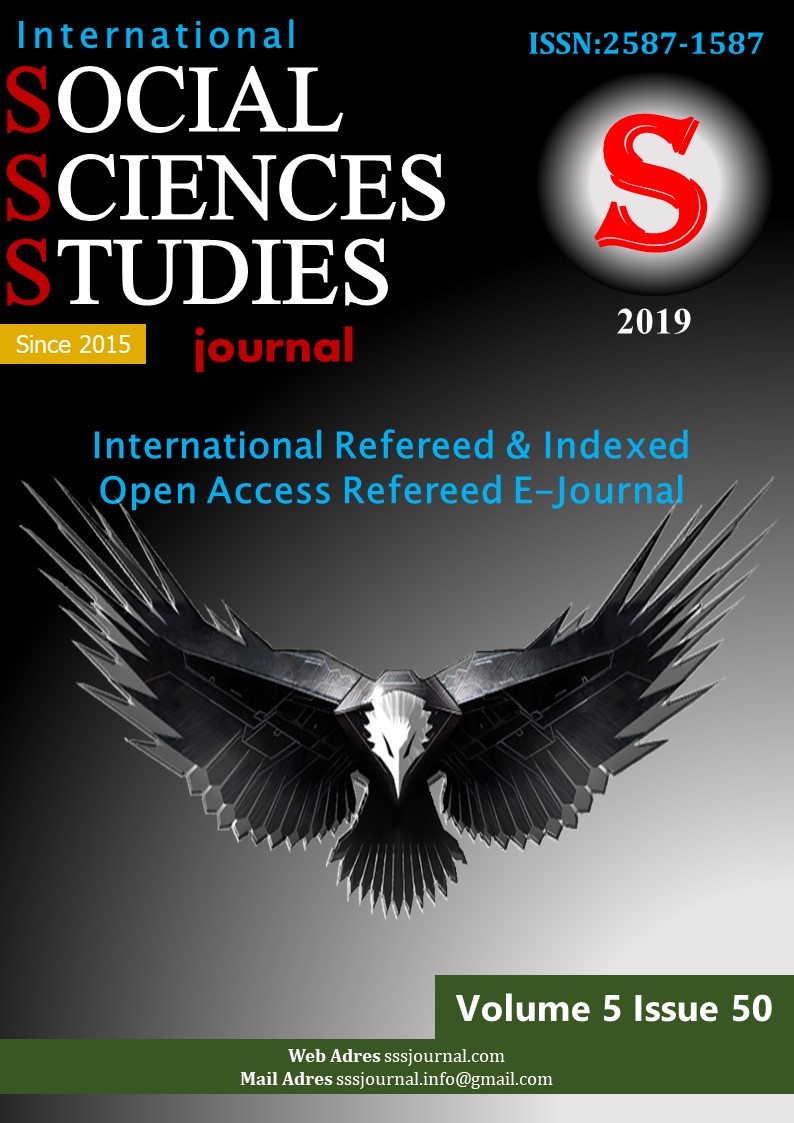Author :
Abstract
Günümüzde ülkelerin küresel çapta rekabet edebilirliği daha çok ürettikleri ve ihraç ettikleri ürün gruplarıyla belirlenmektedir. Katma değeri ve inovasyon düzeyi nispeten yüksek ürünleri üreten ve ihraç eden ülkeler daha yüksek küresel rekabet gücüne sahip olmaktadır. Çalışmada MENA Ülkeleri’nin 2000 ile 2018 yılları arasında, Balassa indeksi kullanılarak dış rekabet güçlerinin belirlenmesi amaçlanmıştır. SITC Rev. 3, 2 haneli ürün grubu analizi yapılarak elde edilen indeks değerleri ile ülkelerin hangi ürün gruplarında hangi ölçüde rekabet gücünün bulunduğu gösterilmeye çalışılmıştır. Çalışmada MENA ülkelerinin faktör yoğunluğu bazında rekabet gücü analizleri söz konusu ülkelerin ağırlıklı olarak emek ve hammadde yoğun ürünlerde üstünlüklerinin olduğunu göstermektedir. MENA ülkelerinin katma değeri yüksek ürünlerin ihracatında ağırlıklı olarak rekabet gücü bulunmamaktadır. Bununla birlikte, söz konusu ülkelerden Ürdün, Lübnan, Fas, Mısır, Katar, İsrail, Tunus ve Kuveyt yeterli düzeyde olmasa da bazı katma değeri yüksek ve Ar-Ge bazlı ürün gruplarının ihracatında rekabet avantajına sahiptir.
Keywords
Abstract
Today, the competitiveness of countries on a global scale is more determined by the product groups they produce and export. Countries that produce and export products with relatively high value added and innovation levels have higher global competitiveness. The study aimed to determine the external competitiveness of MENA countries between 2000 and 2018 using the Balassa index. The index values obtained by analyzing SITC Rev.3, 2 digit product groups were tried to show the extent to which the countries had competitive power in which product groups. In the study, analysis of the competitiveness of MENA countries on the basis of factor density shows that the countries in question have advantages in mainly Labor and raw material intensive products. MENA countries have no competitive power in the export of high value-added products. However, Jordan, Lebanon, Morocco, Egypt, Qatar, Israel, Tunisia and Kuwait have a competitive advantage in the export of some high-added value and R & D-based product groups, although they are not sufficient.
Keywords
- Balassa, B. (1965). Trade Liberalisation and "Revealed" Comparative Advantage. The Manchester School of Economic and Social Studies, 99-123.
- Beyene, H. G. (2017). Trade Integration and Revealed Comparative Advantages of Sub-Saharan Africa and Middle East and North Africa Merchandize Export. Journal of Economic Cooperation and Development, 38(1), 55-96.
- Cem, İ. (2001). Turkey in the New Century. Edition, RUSTEM, Mersin.
- Devlin, J. (2010). Challenges of economic development in the Middle East and North Africa region (Vol. 8), World Scientific.
- Donna, D. R., Widodo, T., & Adiningsih, S. (2017). Pattern of Comparative Advantage in Middle East and North Africa (MENA). Munich Personal RePEc Archive, MPRA.
- Erkan, B. (2011). STIC Teknoloji Sınıflandırmasına İlişkin Açıklanmış Karşılaştırmalı Üstünlüklerin Belirlenmesi Türkiye ve Diğer N-11 Ülkelerinin Karşılaştırılması. Finans Politik ve Ekonomik Yorumlar, 35-48.
- Erkan, B. (2012). BRIC Ülkeleri ve Türkiye'nin İhracat Uzmanlaşma ve Rekabet Düzeylerinin Karşılaştırmalı Analizi. Ekonomik ve Sosyal Araştırmalar Dergisi, 101-131.
- Gupta, M., & Kumar, H. (2017). Revelaed Comparative Advantage: An Analysis Export of Rwanda. IOSR Journal of Economic and Finance, 69-76.
- Ishcukova, N., & Smutka, L. (2013). Revealed Comparative Advantage of Russian Agriculture Export. ACTA UNIVERSITATIS AGRICULTURAE ET SILVICULTURAE MENDELIANAE BRUNENSIS, 941-958.
- Kharlamova, G., & Vertelieva, O. (2013). The International Competitiveness of Countries: Economic- Mathematical Approach. Economics & Sociology Journal, 6(2), 39-52.
- Obadi, S. M. (2017). Competitive Advantage of Yemeni Export in the U.S. Market. Open Access Library Journal, 4, 1-9.
- O’Sullivan, A., Rey, M. E., & Mendez, J. G. (2011). Opportunities and Challenges in the MENA Region. Arab World Competitiveness Report 2012, 42.
- Silvia, M. (2006). Competitiveness: From Microeconomic Foundations to National Determinants. Studies
- Sözen, İ. (2011). MENA Bölgesi Doğal Kaynakları. H. Genç, & F. Sayım içinde, Ortadoğu ve Kuzey Afrika Ülkelerinin Ekonomik Yapısı (s. 120-150). Bursa: MKM Yayıncılık.





